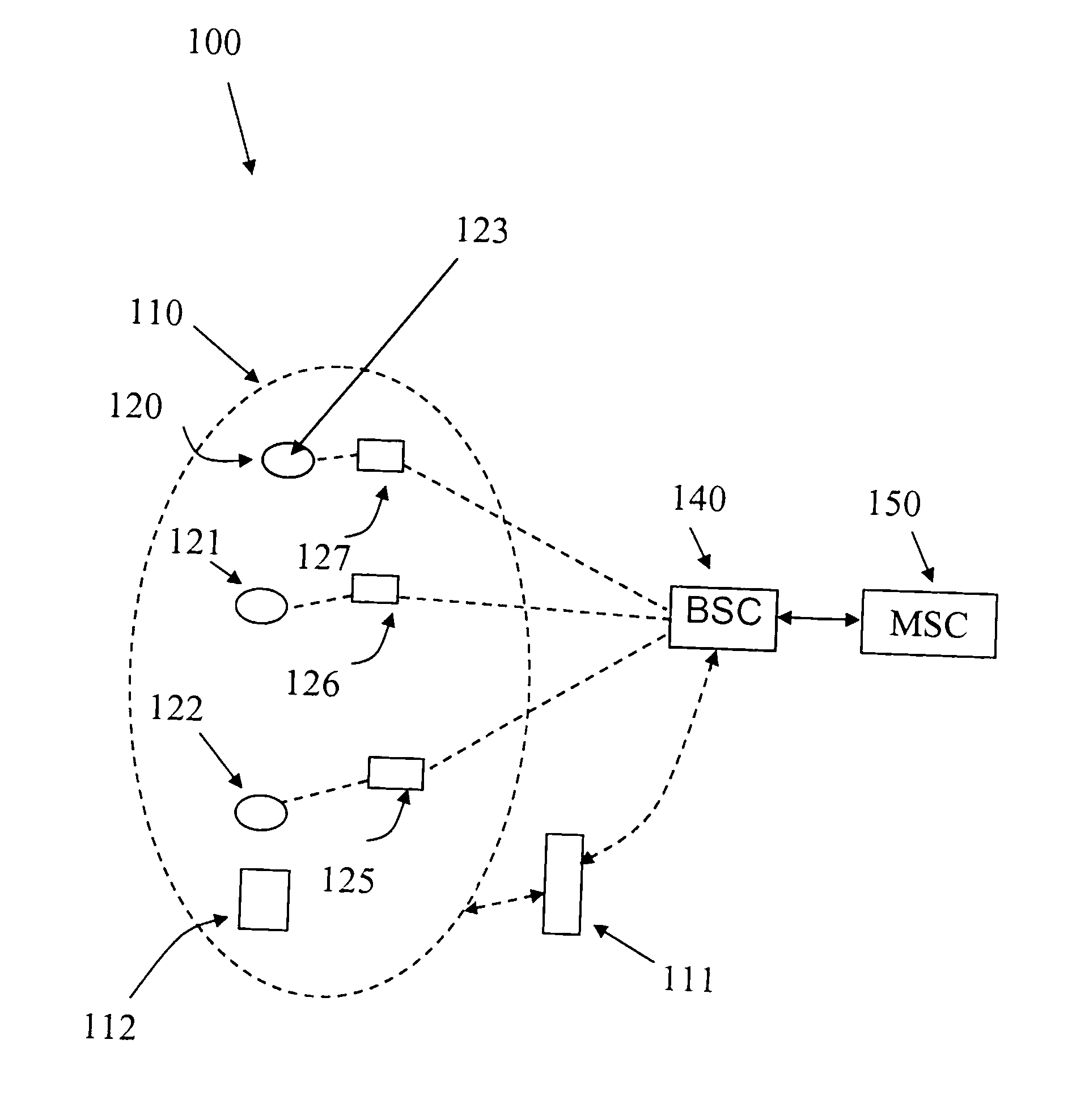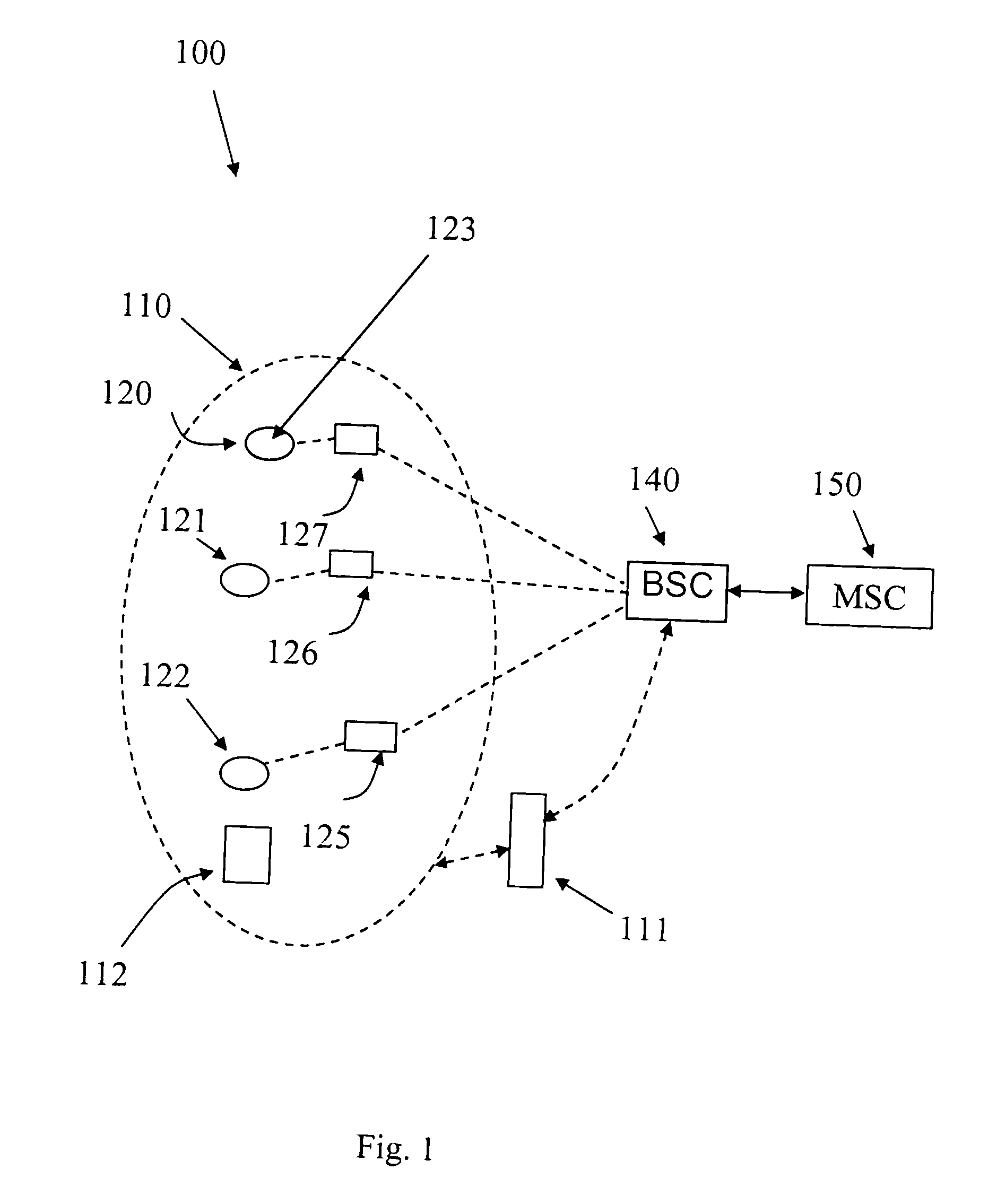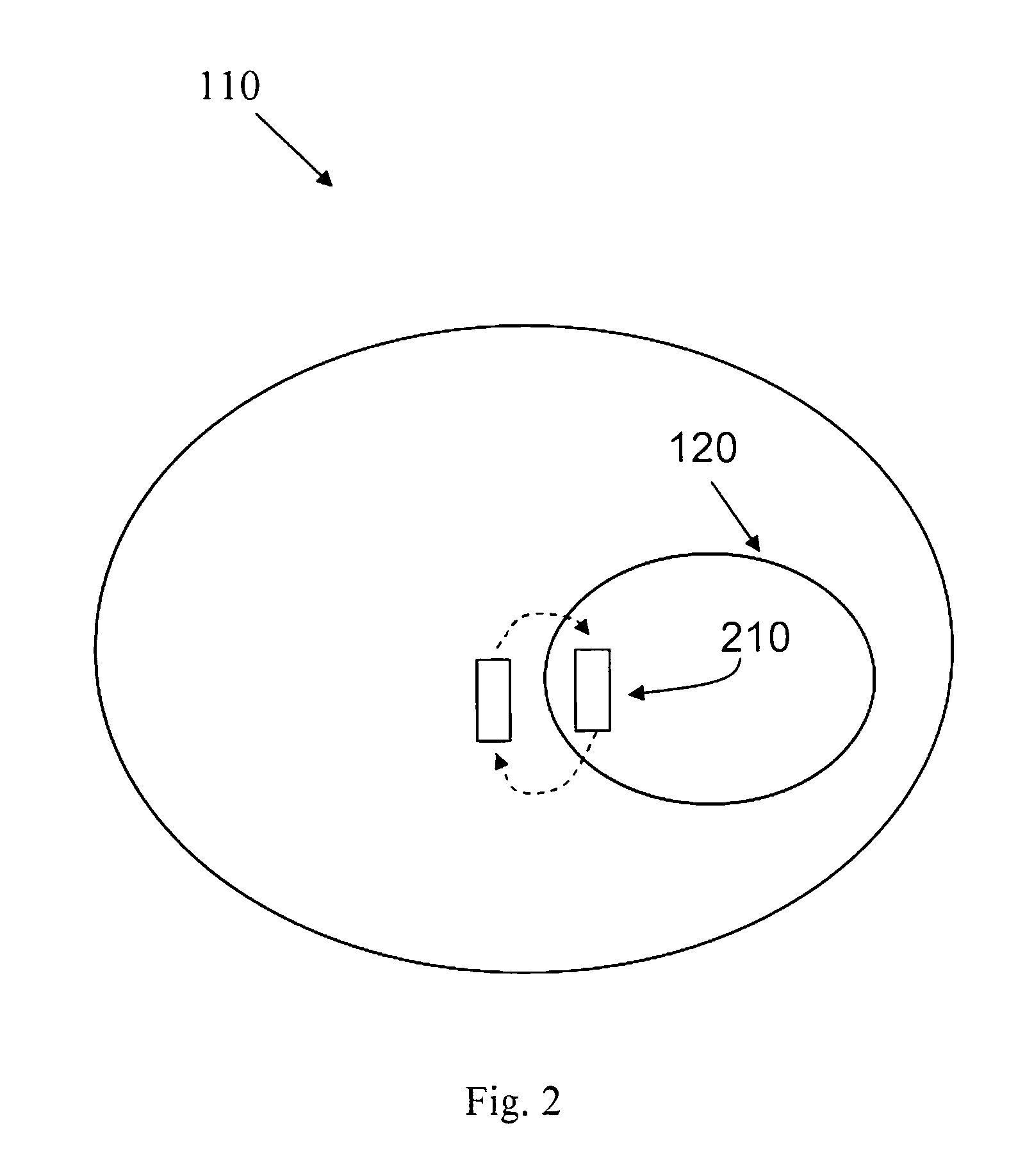Handover from a macro cell back to a femto cell
a macro cell and femto cell technology, applied in the field of cellular telephony network use, can solve the problems of inability to configure the information statically, the limited number of future femto cells, and the limited neighbouring cell list in gsm
- Summary
- Abstract
- Description
- Claims
- Application Information
AI Technical Summary
Benefits of technology
Problems solved by technology
Method used
Image
Examples
Embodiment Construction
[0024]FIG. 1 shows a system 100 in which the invention may be applied. Before the system 100 is described in more detail, it should be pointed out that although the system 100 will essentially be described as a GSM system, this is by way of example only, and is merely intended to facilitate the reader's understanding of the invention, it is not intended to restrict the scope of protection sought for the present invention. On the contrary, the invention can be applied in a wide range of wireless access systems. In the same manner, although the terminology used in describing the invention will mainly be GSM-terminology, this is also merely by way of example. Thus, the term Radio Base Station refers to a function which in other systems has other names, such as for example, Node B. Such systems are also within the scope of the present invention.
[0025]Returning now to FIG. 1 and the system 100 shown there, the system comprises a number of cells of a first kind, i.e. normal or “Macro” cel...
PUM
 Login to View More
Login to View More Abstract
Description
Claims
Application Information
 Login to View More
Login to View More - R&D
- Intellectual Property
- Life Sciences
- Materials
- Tech Scout
- Unparalleled Data Quality
- Higher Quality Content
- 60% Fewer Hallucinations
Browse by: Latest US Patents, China's latest patents, Technical Efficacy Thesaurus, Application Domain, Technology Topic, Popular Technical Reports.
© 2025 PatSnap. All rights reserved.Legal|Privacy policy|Modern Slavery Act Transparency Statement|Sitemap|About US| Contact US: help@patsnap.com



